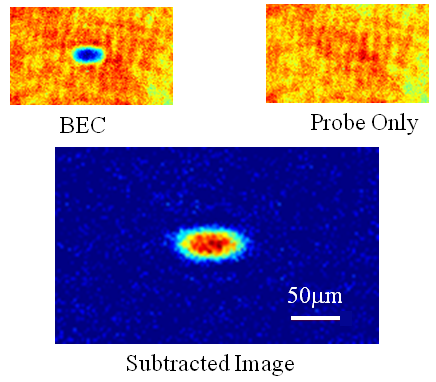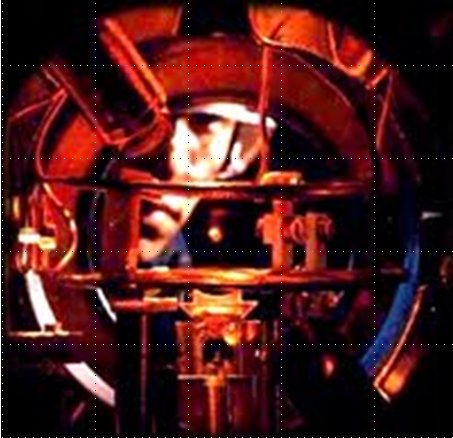Element: Francium (Fr) Atomic Number: 87 Mass: Numerous isotopes ranging in mass from 199 amu to 232 amu, none of them stable. The only ones laser cooled are the five between 208 amu and 212 amu, plus the one at 221 amu. Laser cooling wavelength: 718 nm Doppler cooling limit: 182 μK. Chemical classification: Alkali… Continue reading Laser-Cooled Atoms: Francium
Category: Lasers
Laser-Cooled Atoms: Strontium
Element: Strontium (Sr) Atomic Number: 38 Mass: Four stable isotopes, ranging from 84 to 88 amu Laser cooling wavelength: Two different transitions are used in the laser cooling of strontium: a blue line at 461 nm that’s an ordinary sort of transition, and an exceptionally narrow “intercombination” line at 689 nm. Doppler cooling limit: 770… Continue reading Laser-Cooled Atoms: Strontium
Laser-Cooled Atoms: Xenon
Element: Xenon (Xe) Atomic Number: 54 Mass: nine “stable” isotopes, masses from 124 to 136 amu. Xenon-136 is technically radioactive, but with a half-life of a hundred billion billion years, so, you know, it’s pretty much stable. Laser cooling wavelength: 882 nm Doppler cooling limit: 120 μK Chemical classification: Noble gas, part of column VIII… Continue reading Laser-Cooled Atoms: Xenon
Laser-Cooled Atoms: Helium
Element: Helium (He) Atomic Number: 2 Mass: two stable isotopes, 3 and 4 amu. Laser cooling wavelength: 1083 nm Doppler cooling limit: 38 μK (It should be noted, though, that despite the low temperature, laser-cooled helium has a relatively high velocity– that Doppler limit corresponds to an average velocity that’s just about the same as… Continue reading Laser-Cooled Atoms: Helium
Laser-Cooled Atoms: Rubidium
Element: Rubidium (Rb) Atomic Number: 37 Mass: two “stable” isotopes, 85 and 87 amu (rubidium-87 is technically radioactive, but it’s half-life is 48 billion years, so it might as well be stable for atomic physics purposes. Laser cooling wavelength: 780 nm Doppler cooling limit: 140 μK Chemical classification: Alkali metal, column I of the periodic… Continue reading Laser-Cooled Atoms: Rubidium
Laser-Cooled Atoms: Sodium
Element: Sodium (Na) Atomic Number: 11 Mass: one stable isotope, 23 amu Laser cooling wavelength: 589 nm Doppler cooling limit: 240 μK Chemical classification: Alkali metal, column I of the periodic table. Like the majority of elements, it’s a greyish metal at room temperature. Like the other alkalis, it’s highly reactive, and bursts into flame… Continue reading Laser-Cooled Atoms: Sodium
Know Your Laser-Cooled Atoms
At the tail end of the cold-atom toolbox series, I joked about doing a “trading card” version shortening the posts to a more web-friendly length. In idly thinking about this, though, it occurred to me that if one were going to have cold-atom trading cards, it might make more sense to have them for the… Continue reading Know Your Laser-Cooled Atoms
Tools of the Cold-Atom Trade: Atom Detection and Imaging
This is probably the last trip into the cold atom toolbox, unless I think of something else while I’m writing it. But don’t make the mistake of assuming it’s an afterthought– far from it. In some ways, today’s topic is the most important, because it covers the ways that we study the atoms once we… Continue reading Tools of the Cold-Atom Trade: Atom Detection and Imaging
Tools of the Cold-Atom Trade: Magneto-Optical Traps
Today’s dip into the cold-atom toolbox is to explain the real workhorse of cold-atom physics, the magneto-optical trap. This is the technology that really makes laser cooling useful, by letting you collect massive numbers of atoms at very low temperatures and moderate density. Wait a minute, I thought we already had that, with optical molasses?… Continue reading Tools of the Cold-Atom Trade: Magneto-Optical Traps
Tools of the Cold-Atom Trade: Optical Pumping and Sisyphus Cooling
This topic is an addition to the original list in the introductory post for the series, because I had thought I could deal with it in one of the other entries. Really, though, it deserves its own installment because of its important role in the history of laser cooling. Laser cooling would not be as… Continue reading Tools of the Cold-Atom Trade: Optical Pumping and Sisyphus Cooling









